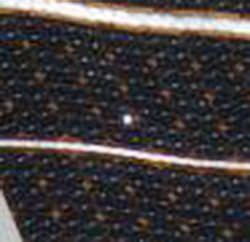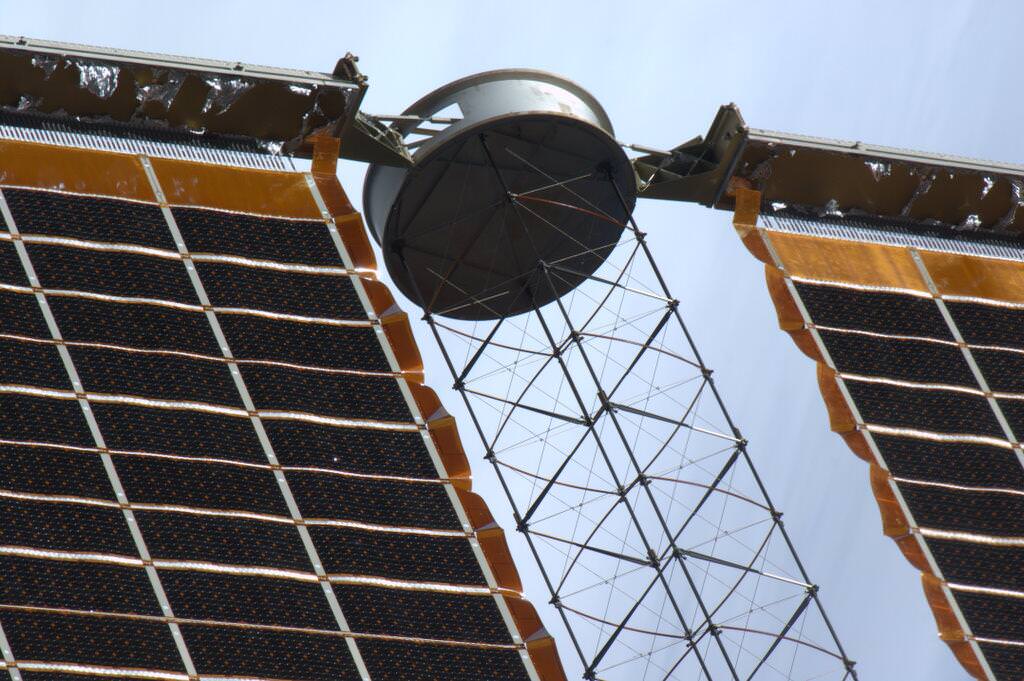Canadian astronaut and Expedition 35 commander Chris Hadfield just shared this photo on Twitter, showing a portion of one of the solar array wings on the ISS… with a small but very visible hole made by a passing meteoroid in one of the cells.
In typical poetic fashion, Commander Hadfield referred to the offending object as “a small stone from the universe.”
“Glad it missed the hull,” he added.

While likened to a bullet hole, whatever struck the solar panel was actually traveling much faster when it hit. Most bullets travel at a velocity of around 1,000-2,000 mph (although usually described in feet per second) but meteoroids are traveling through space at speeds of well over 25,000 mph — many times faster than any bullet!
Luckily the ISS has a multi-layered hull consisting of layers of different materials (depending on where the sections were built), providing protection from micrometeorite impacts. If an object were to hit an inhabited section of the Station, it would be slowed down enough by the different layers to either not make it to the main hull or else merely create an audible “ping.”
Unnerving, yes, but at least harmless. Still, it’s a reminder that the Solar System is still very much a shooting gallery and our spacefaring safety relies on the use of technology to protect ourselves.
Image: NASA / Chris Hadfield
Fact: The 110 kilowatts of power for the ISS is supplied by an acre of solar panels!


And it’s that acre of solar panel arrays that is mostly responsible for the brightness of the ISS as it passes overhead.
It’s unlikely this was caused by a meteor, more likely a piece of man-made space debris in low Earth orbit.
Could have been either. Either one would hit with a multiple of bullet speed, and would be equally dangerous.
Yes, definitely, I agree, but man-made debris is way more plentiful at the altitude of low Earth orbit where ISS is, so much more likely to have caused that damage.
No Commander Hadfield/McCoy jokes?
What effect does this hole have on the operation of the solar panels? What voltage lost? Is it measurable?
I’d imagine the power loss due to the damage caused by the impactor would be very minor.
” If an object were to hit an inhabited section of the Station, it would
be slowed down enough by the different layers to either not make it to
the main hull or else merely create an audible “ping”,… at least that’s what we’re telling those folks up there. ;-).”
There, fixed it for you.